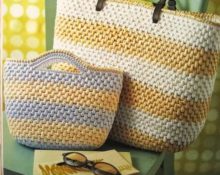
creativecommons.org
In the last few years, dollhouses made from felt have become especially popular among moms and dads. Toy apartments made from thick fabric are not only more environmentally friendly, but also allow their young owners to freely take them on trips and significantly save space in their luggage. For parents, this is also a very convenient gift: firstly, it is economical - mom (or an advanced dad) spends time only on sewing and choosing the interior for the doll, and secondly, everything is agreed upon with the young customer, who also participates in the creation of the project.
History of felt toys and decorations
Since ancient times, wool and woolen fabrics have been actively used in everyday life. Initially, dense felt (or its analogues) was used in Mongolia and Altai to decorate the domes of yurts - mobile homes for hunters and nomads. Felt is essentially a softer analogue of felt.Just like felt made from coarse and dense wool, felt has strength and wear resistance, but unlike its “bigger brother”, felt is more delicate (it’s not for nothing that the word “felt” itself comes from the French - “feutre”) and is made from rabbit, hare or goat fluff.
In many sources you will find that the first felt toys were made by the German company Steiff in the 1880s. But this is only partly true: the workshop in Germany was only the first mass production, and the toys themselves were made for children by their mothers long before that. Thus, medieval rag dolls did not reach us due to the fragility of the material.
Interactivity of DIY felt houses
Despite the conventional name “doll house,” there are at least two formats of felt houses for dolls: three-dimensional and 2D travel houses in the form of a book. Depending on the wishes of the child, you can quickly and cost-effectively change parts in a dollhouse made of felt. If you suddenly don’t like the color, the set, or want to change the layout, you and your child can “do the renovation” in one evening, and if you want and have free time, you can design and decorate several rooms at once. This activity will perfectly develop your baby’s imagination and fine motor skills.

creativecommons.org
Environmental friendliness of felt toys
Modern felt is also made using admixtures, which adds texture to the material and allows it to reproduce a large palette of different colors and shades. Felt is also considered a hypoallergenic material that does not emit any harmful chemicals and is easy to recycle.It is thanks to its natural composition that felt is considered one of the most practical and environmentally friendly materials. Toys and felt doll utensils made from felt will help instill in your child a concern for the environment, or at least take the first steps in explaining why caring for nature is so important.
Materials for making your own felt doll house:
- Pieces of felt in different colors. We recommend choosing the least stainable colors
- Cardboard and/or thick paper
- Scissors
- Hole puncher (necessary for making a mobile house for a felt doll)
- Strong threads
- Pencil or chalk for pattern
- Sentepon (needed for a mobile house)
- Printed pattern adjusted to the scale you need
- Stationary version of a felt house for dolls
- Glue
Depending on your wishes, you can add lace, sparkles, beads and other decor to decorate the house. Most often, craftswomen use the image of a Christmas gingerbread house, decorating it with the appropriate paraphernalia for a children's dollhouse made of felt: candies cut out of fabric, caramels made of epoxy resin, shiny threads and lace trim.
DIY stationary version of a felt doll house:
- Using the sample presented in the article, cut pieces of dark felt, leaving a margin of about 0.5 cm.
- Repeat the same steps with cardboard.
- Glue two pieces of felt onto the cardboard to create a more dense structure.
- Repeat the same steps with all pieces of cardboard.
- Connect all the resulting walls of the house using thread, securing them together with a loop seam. The seam securing each joint of the dollhouse should be on the outside of the product.You can create a gingerbread house effect by choosing brown felt and sewing the pieces together with white thread. Do not retreat more than the 0.5 cm already set aside, so you do not have to stitch the cardboard.
- If you still have material left, you can build a roof from felt of a different color, and also add windows and a door.
Formally, both options easily fold into a bag and are perfect for mobile parents, but, perhaps, only the book version of the dollhouse will allow you to play in it, including on the train and on the plane.
Mobile version of a felt dollhouse:
- Cut pieces of felt of different colors the size of an A4 sheet.
- Repeat the same action with padding polyester.
- Sew the pieces of felt together, placing padding polyester between them.
- Using a hole punch, make 4 holes in the resulting sheets.
- Finish the edges with a buttonhole stitch so that the padding polyester is not visible.
- Connect all the resulting sheets of pages and fasten them together with ribbons.
- Cut out dolls, their clothes, furniture and interior items from felt.
- Each page is a separate room. Turn on your imagination, involve your child in the process and decorate each page by attaching cut-out furniture to it using threads. You should get a 2D floor plan, like a real interior designer.


 0
0





